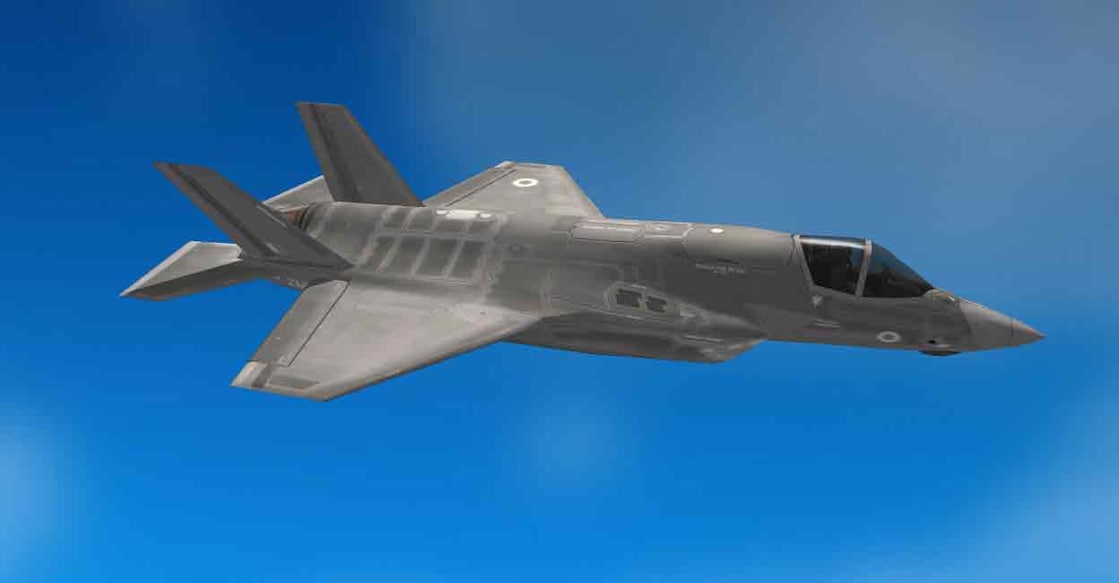Stealth, speed & vertical takeoff: What makes the British F‑35B fighter jet a game-changer

Mail This Article
The British F‑35B fighter jet that made an unscheduled landing at Thiruvananthapuram International Airport has sparked widespread interest — not just over why it remains grounded, but also about what this cutting-edge warplane is truly capable of.
The F‑35B Lightning II is a fifth-generation stealth multirole fighter capable of short takeoff and vertical landing (STOVL), allowing it to operate from aircraft carriers like HMS Prince of Wales without requiring conventional runways. Operated jointly by the Royal Air Force and Royal Navy, it is a critical asset in the UK’s carrier strike group.
The F‑35B is one of three variants in Lockheed Martin’s F‑35 Lightning II family:
- F‑35A – conventional takeoff and landing (CTOL)
- F‑35B – STOVL
- F‑35C – carrier variant (CATOBAR: catapult-assisted takeoff, arrested recovery)
According to the Royal Air Force, the Lightning is equipped with advanced sensors, low-observable stealth technology, and powerful mission systems. These systems provide the pilot with an integrated 360-degree view of the battlespace, enabling simultaneous air-to-air, air-to-ground, electronic warfare, and intelligence missions. The aircraft can securely share this situational data with other platforms, enhancing coordinated combat operations.
Fleet size
- Currently in service: Approximately 30 F‑35B jets
- Planned under current procurement: 48 F‑35Bs
- Upcoming acquisition: 12 F‑35A jets for NATO’s nuclear-sharing mission
Capabilities
- Roles: Multirole capability including strike missions, close air support, surveillance, and electronic attack
- Stealth & Sensors: Radar-evading profile, internal weapons bays, and sensor fusion for full-spectrum situational awareness
- Interoperability: Secure data links allow battlefield intelligence sharing across allied forces
Specifications
- Engine: Pratt & Whitney F135‑PW‑600 STOVL turbofan
- Thrust: ~40,000 lb with afterburner
- Length: 15.6 m (51 ft)
- Height: 4.36 m (14.3 ft)
- Wingspan: 10.7 m (35 ft)
- Max Speed: Mach 1.6 (~1,975 km/h)
- Service Ceiling: 50,000 ft (15,240 m)
- Crew: Single pilot
- Refuelling: Probe-and-drogue system
Armament and Systems
- Air-to-Air Missiles: Meteor, AMRAAM, ASRAAM
- Air-to-Ground: Paveway IV precision-guided bombs
- Other Systems: 25 mm internal cannon, AN/APG-81 AESA radar, Electro-Optical Distributed Aperture System (DAS), Electro-Optical Targeting System (EOTS), Secure datalinks (Link 16, MADL)
From Harrier to Lightning
The F‑35B marked a major leap in UK combat aviation when it replaced the Harrier in 2018. The Harrier, first flown in 1967, had introduced vertical/short takeoff capability to the Royal Navy in the 1970s, but was retired by 2010. The F‑35B not only restored that ability--it revolutionised it.
The jet’s origins trace back to the US Department of Defense’s 1983 ATA and ASTOVL programs, which merged into the Joint Strike Fighter (JSF) initiative in 1996. Lockheed Martin’s X‑35 prototype won the JSF contract in 2001, becoming the F‑35 Lightning II.
The UK, as the only Level 1 partner in the JSF programme, has invested heavily in the platform and plays a central role in its development and production. With increasing F‑35 numbers and an expanding carrier strike capability, the UK has placed this aircraft at the heart of its future airpower strategy.

